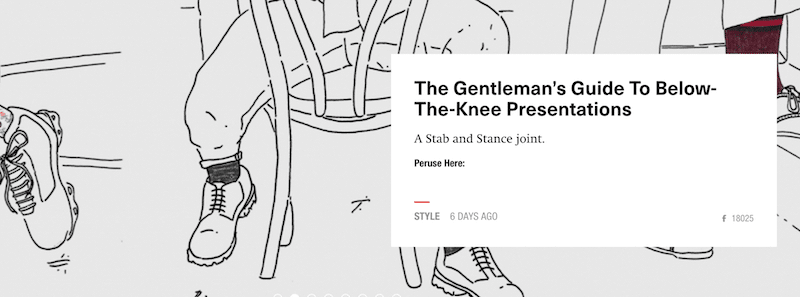Has a massive falsehood been foisted upon all trusting surf fans?
Today found me heartbroken. Utterly bereft of joy. Crying onto my keyboard. Sobbing even and, when I finally found breath, screaming toward Stab‘s new Venice-adjacent location II “Why SurfStitch? Oh why?”
Yesterday, you see, I wrote a piece on Stab‘s fantastic “How to wear socks” feature. Oh sure I had wished they included the most fantastic of all ways to wear socks but still I was very pleased that 18,025 fellow travelers had clicked on the story, through Facebook, and “liked” it.
What a wonderful truth!
Eighteen thousand and twenty-five surfers as thrilled by mostly proper sock etiquette as me!
This morning, though, I returned to Stab having expected the number of “likes” to have shot through the roof. To 30,000! 40,000 thousand even!
But there they sat at 18,025.
Still eighteen thousand and twenty-five souls.
Hmmmmmm.
I started poking around and seeing that the rest of the “likes” on Stab stories averaged maybe 250. Maybe. And doubt started to creep. Are there fewer surfers who appreciate correct sock etiquette than reported? Not 18,025?
But no way! And how would Stab perpetrate such a thing?
Then I read a story on ZeroHedge titled A Russian Went Inside a Chinese Click-Farm: This is What He Found. It read:
On the day when Snapchat erased billions of market cap from investors (and founders) accounts – as the MAUs-means-money model seems to break – we thought it worthwhile taking another glimpse into the hush-hush world of ‘click-farms’ and the fakeness of the latest social network fads.
In 2014, we first exposed the world to the ‘click-farm’ where nothing is what it seems, and where social networking participants spend millions of dollars to appear more important, followed, prestigious, cool, or generally “liked” than they really are. As we detailed at the time, social networking has been the “it” thing for a while: for the networks it makes perfect sense because they are merely the aggregators and distributors of terrabytes of free, third party created content affording them multi-billion dollar valuations without generating a cent in profits (just think of the upside potential in having 10 times the world’s population on any given publicly-traded network), while for users it provides the opportunity to be seen, to be evaluated or “liked” on one’s objective, impartial merits and to maybe go “viral”, potentially making money in the process. Of course, the biggest draws of social networks also quickly became their biggest weaknesses, and it didn’t take long to game the weakest link: that apparent popularity based on the size of one’s following or the number of likes, which usually translates into power and/or money, is artificial and can be purchased for a price.
As we concluded previously, the bottom line is simple: “The illusion of a massive following is often just that.”
Son of a motherfucking bitch.
Are the Chinese wearing their socks cooler than I am?
Stab? What did you know and when did you know it? I WANT THE TRUTH!








